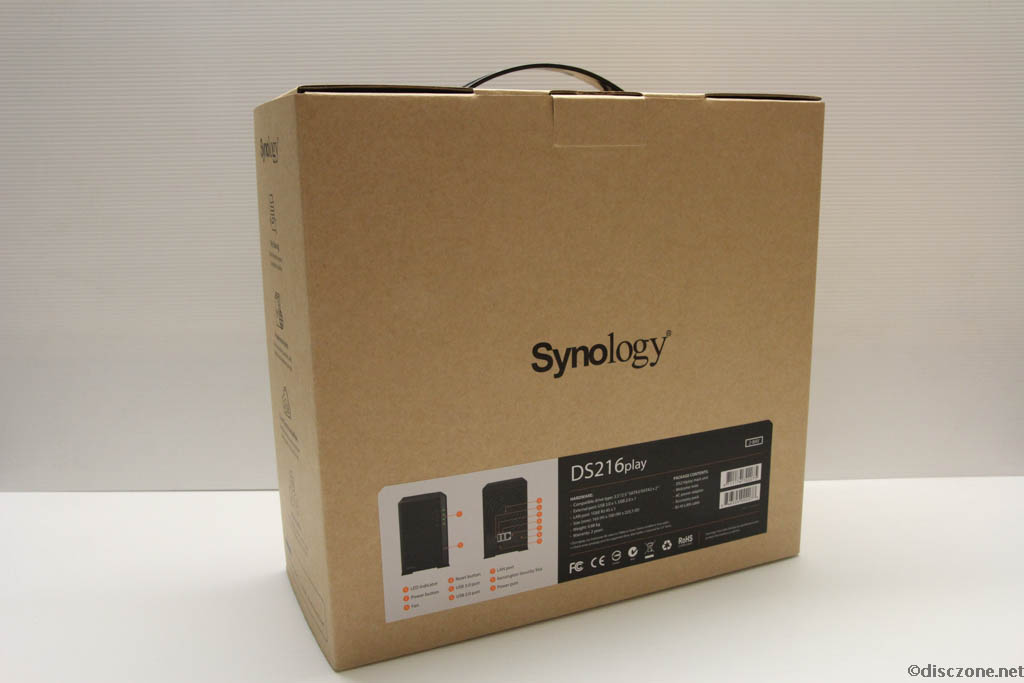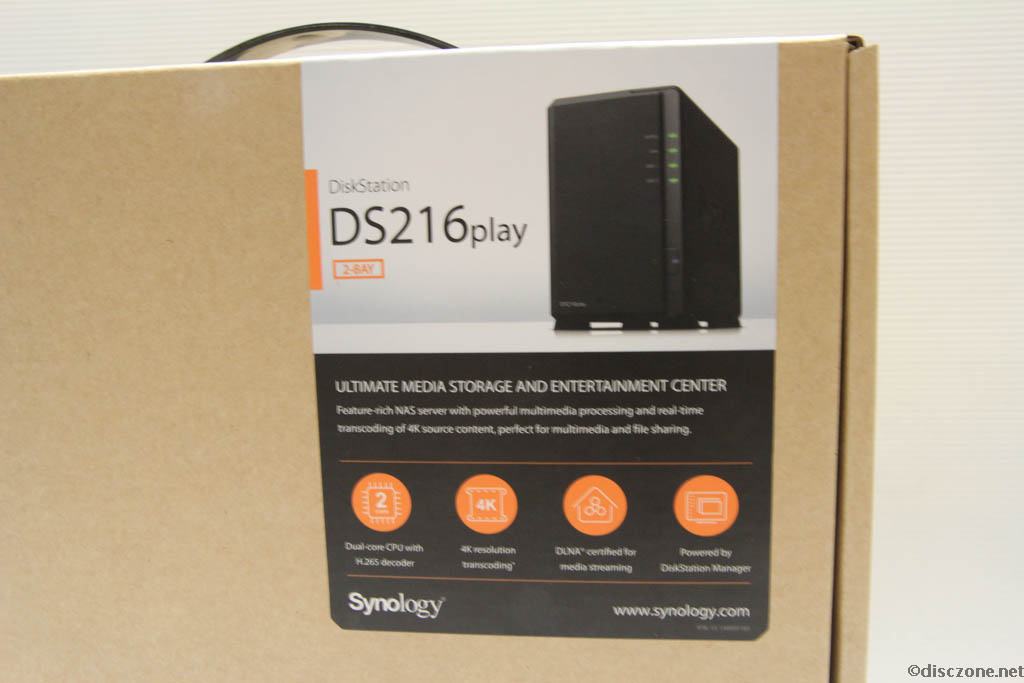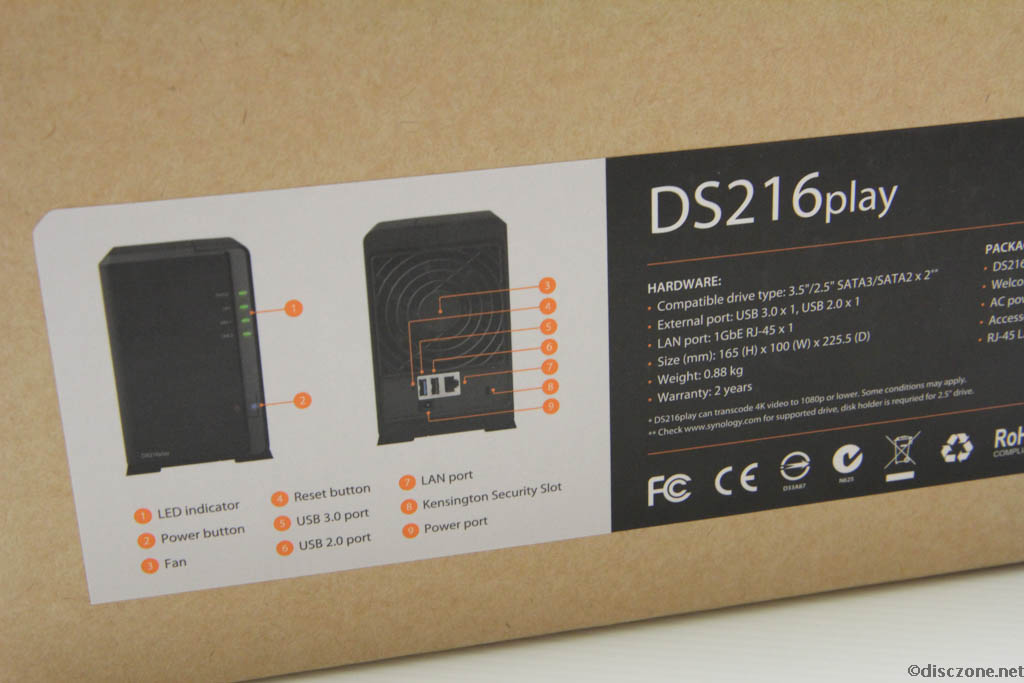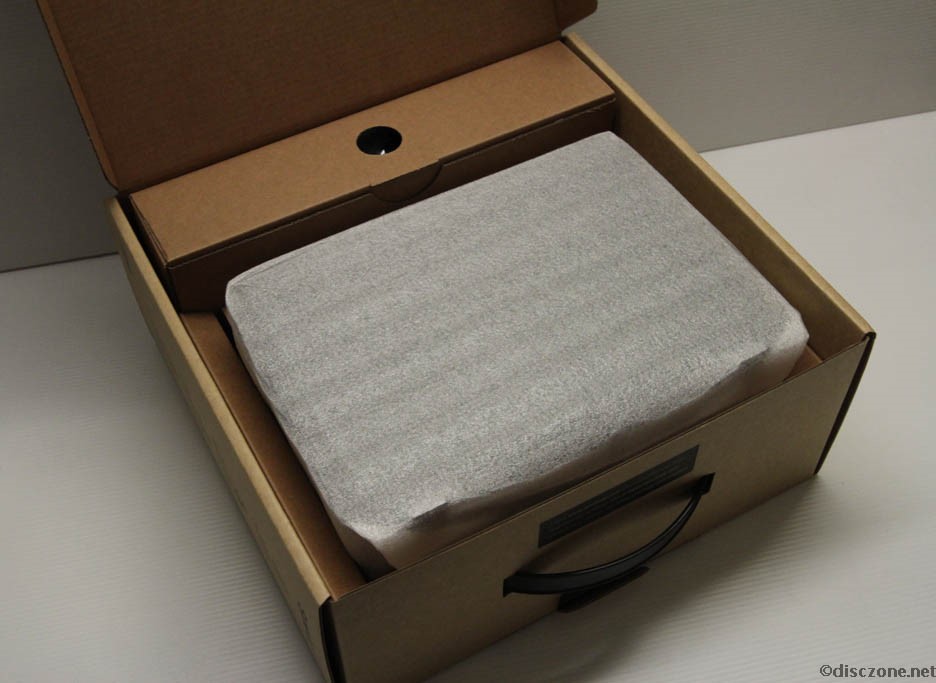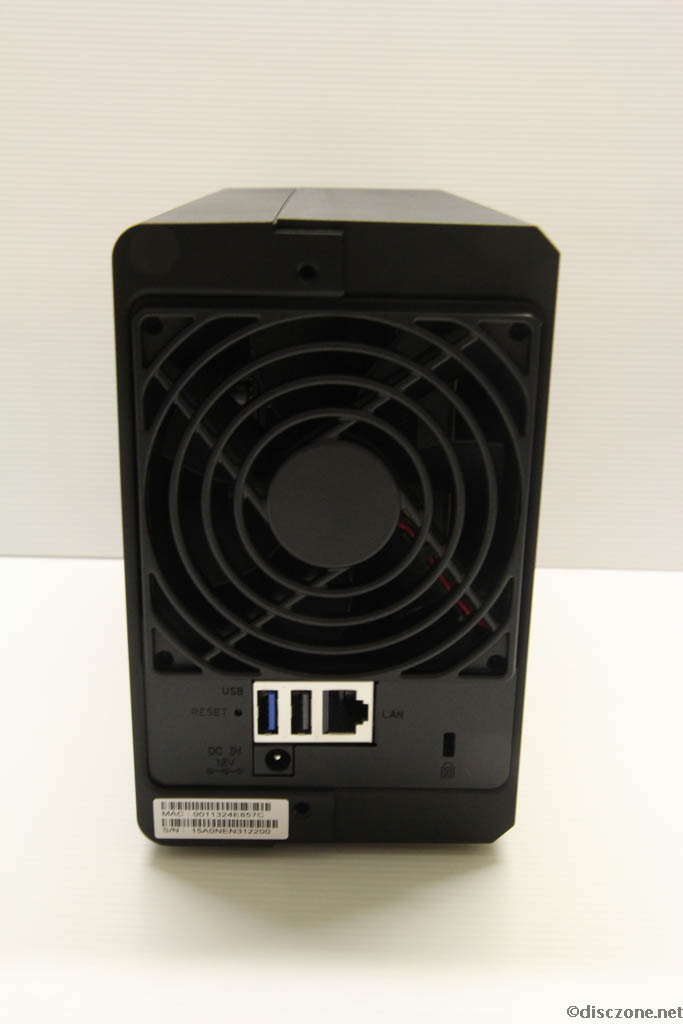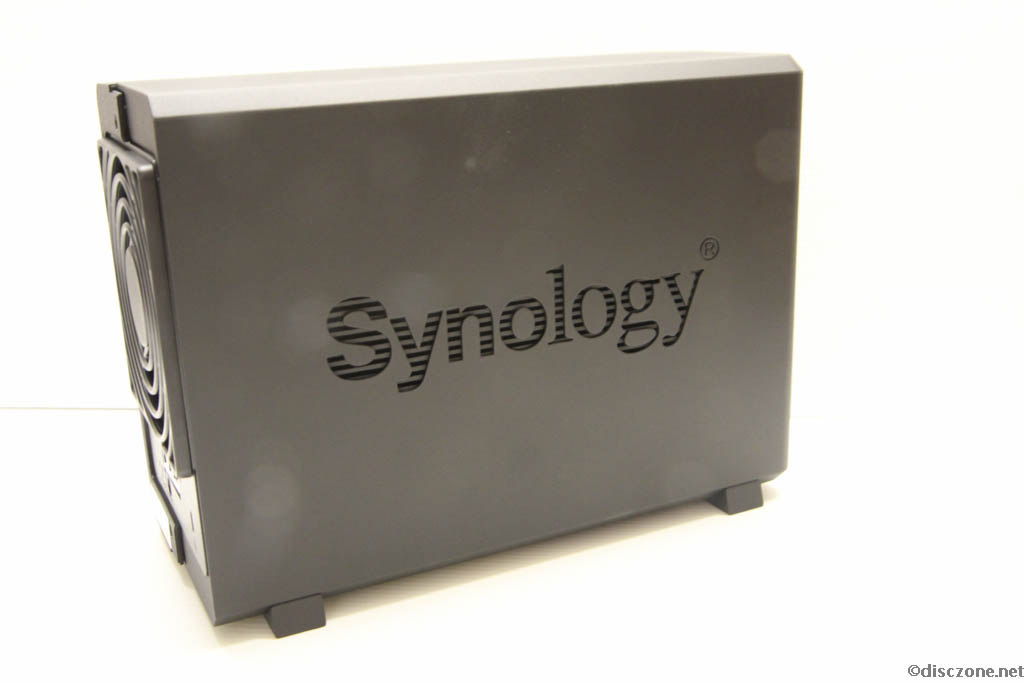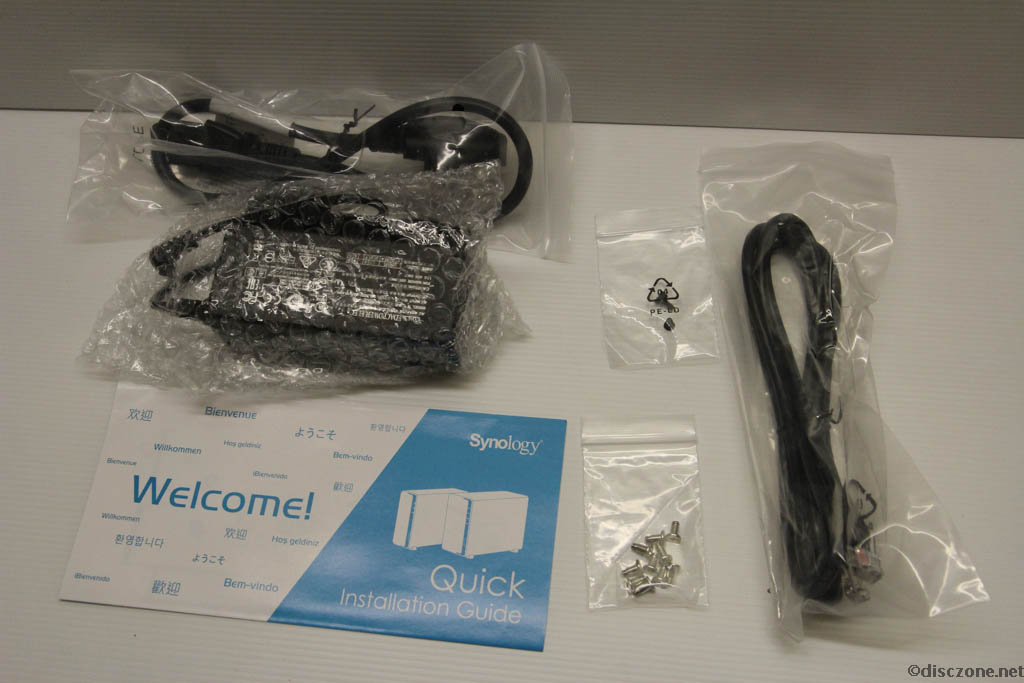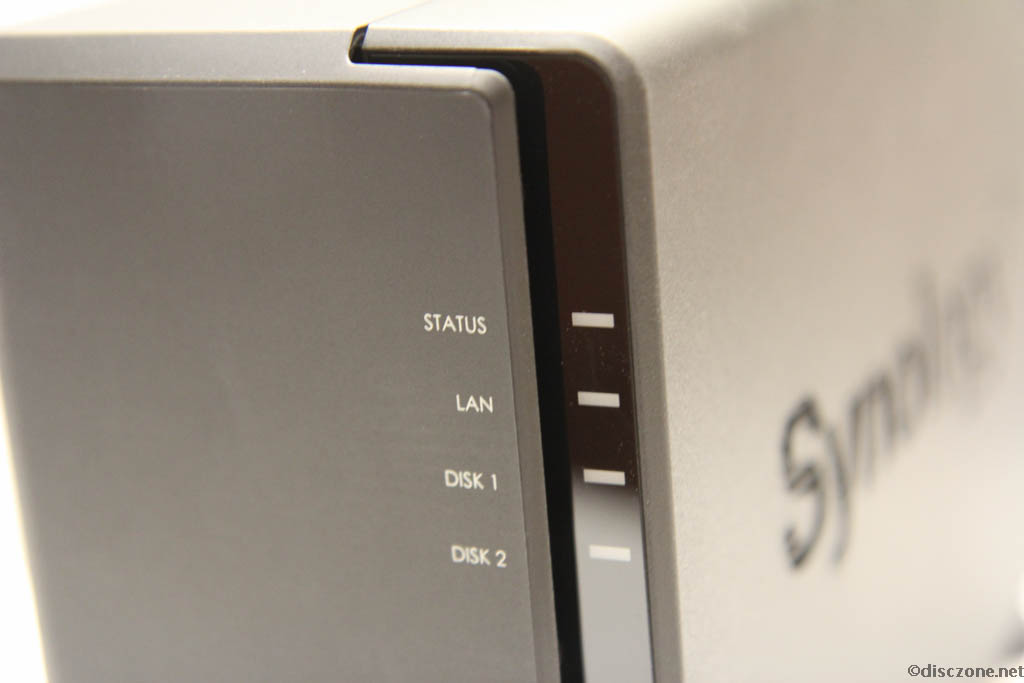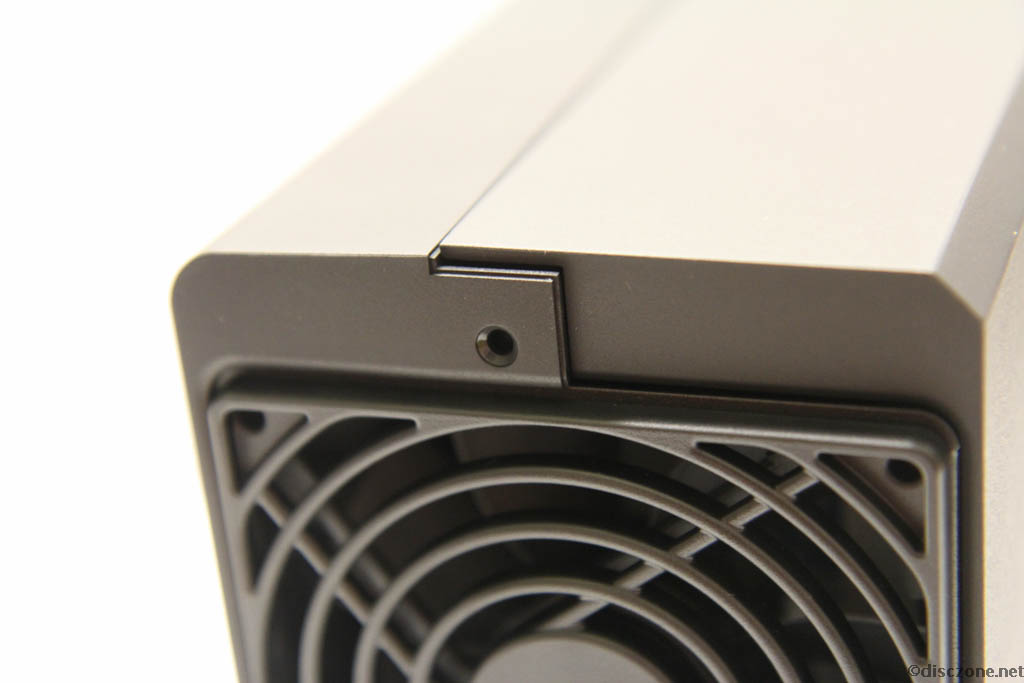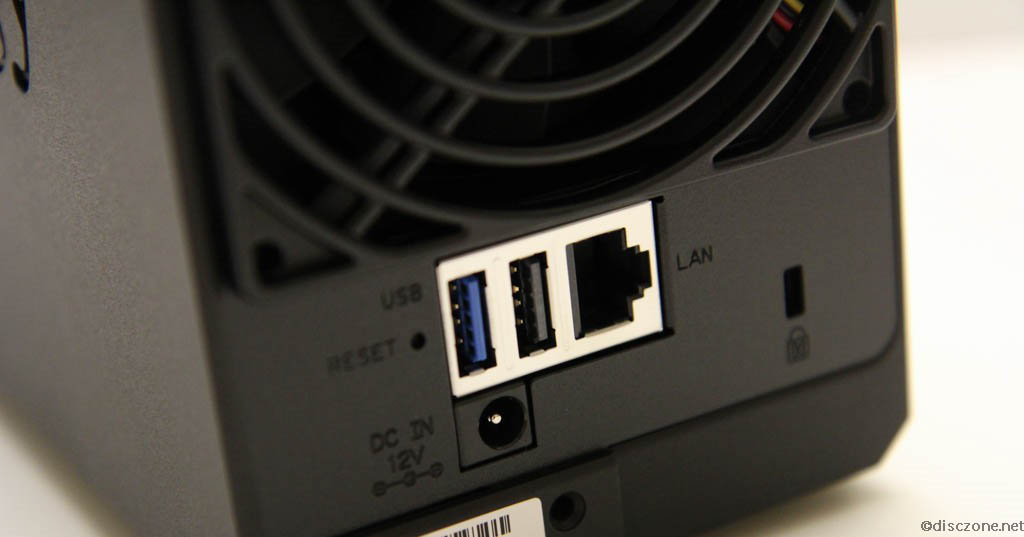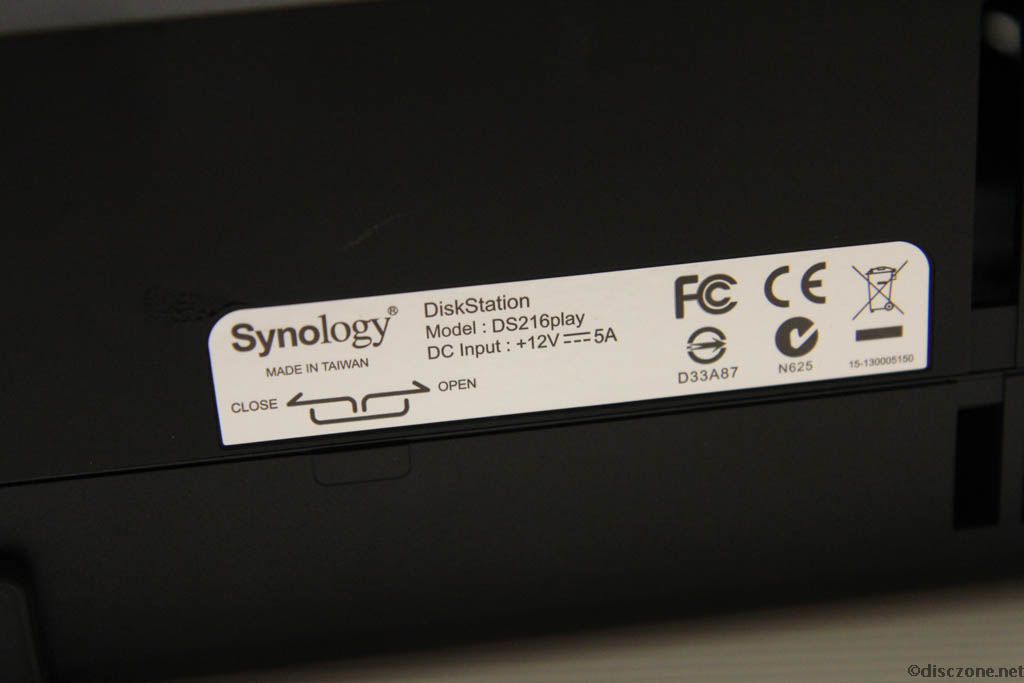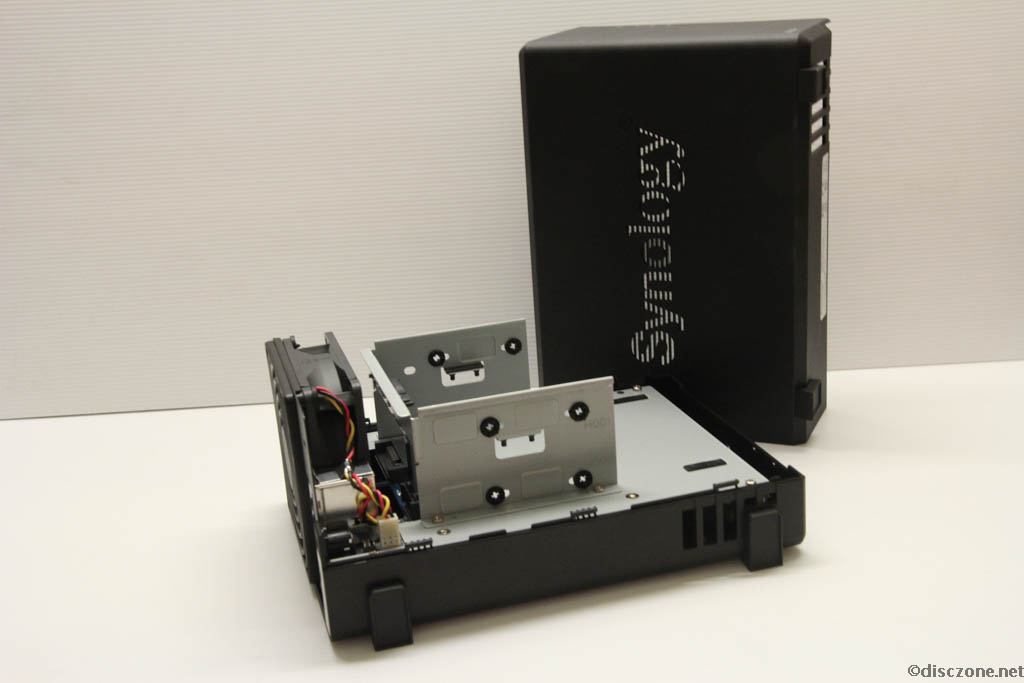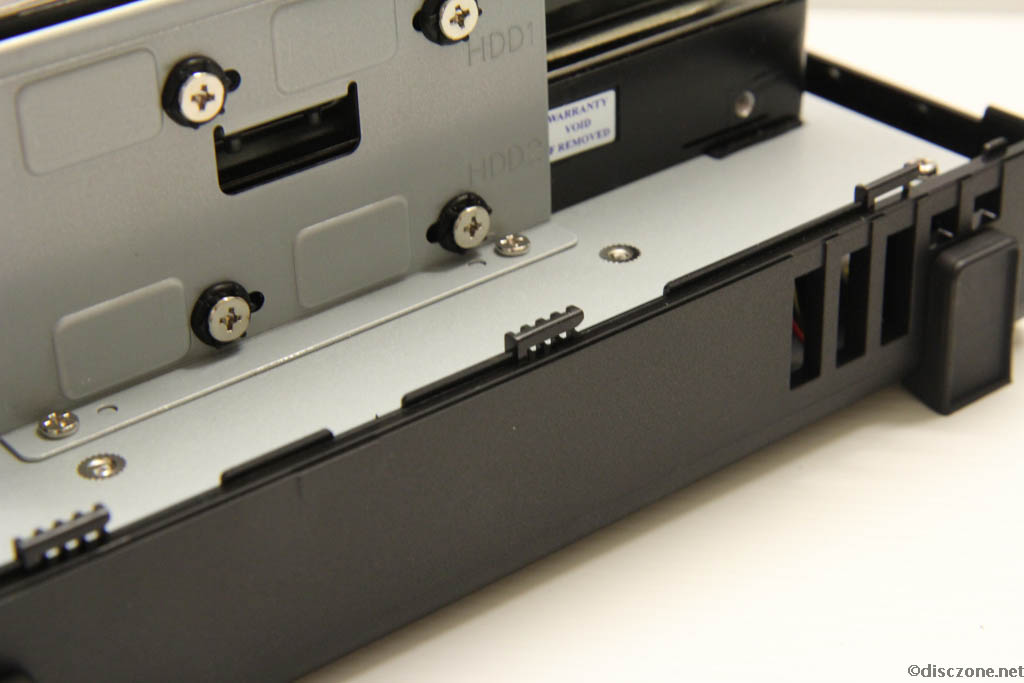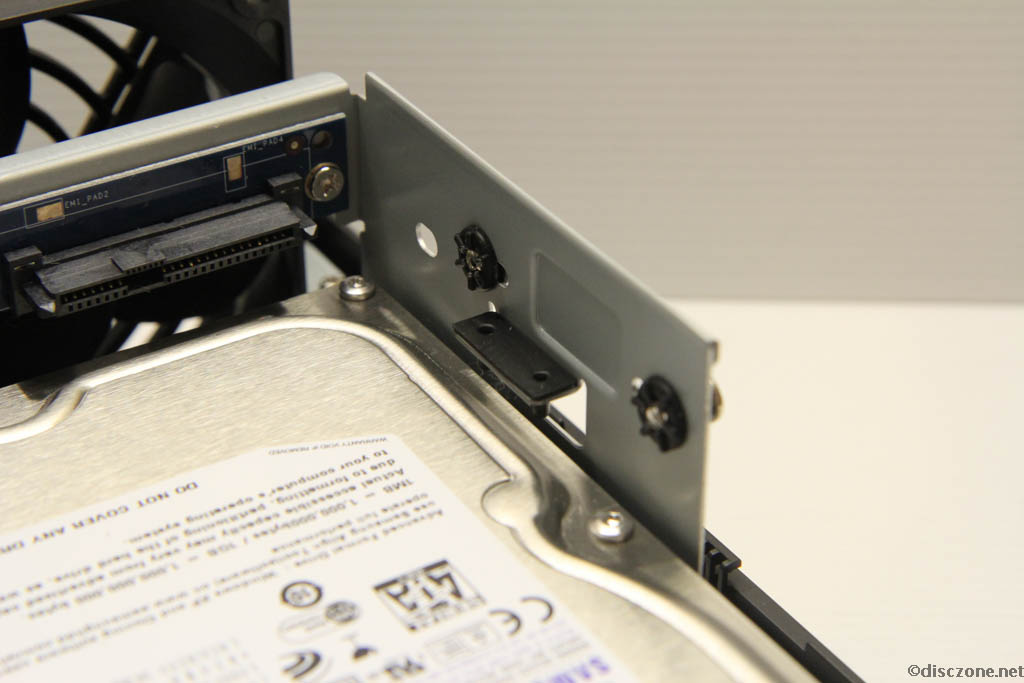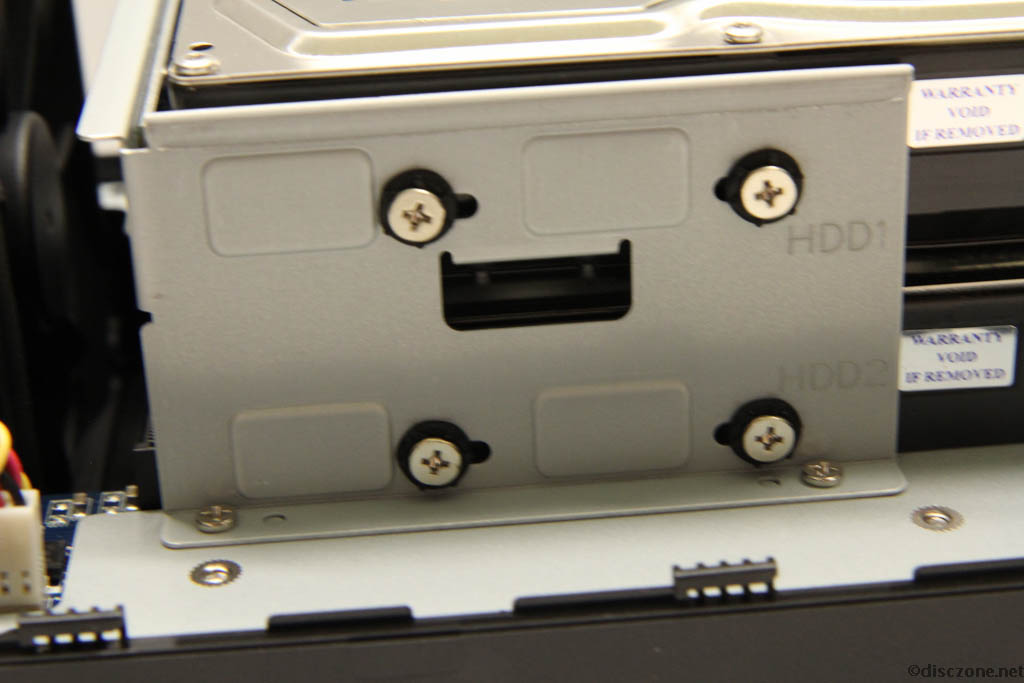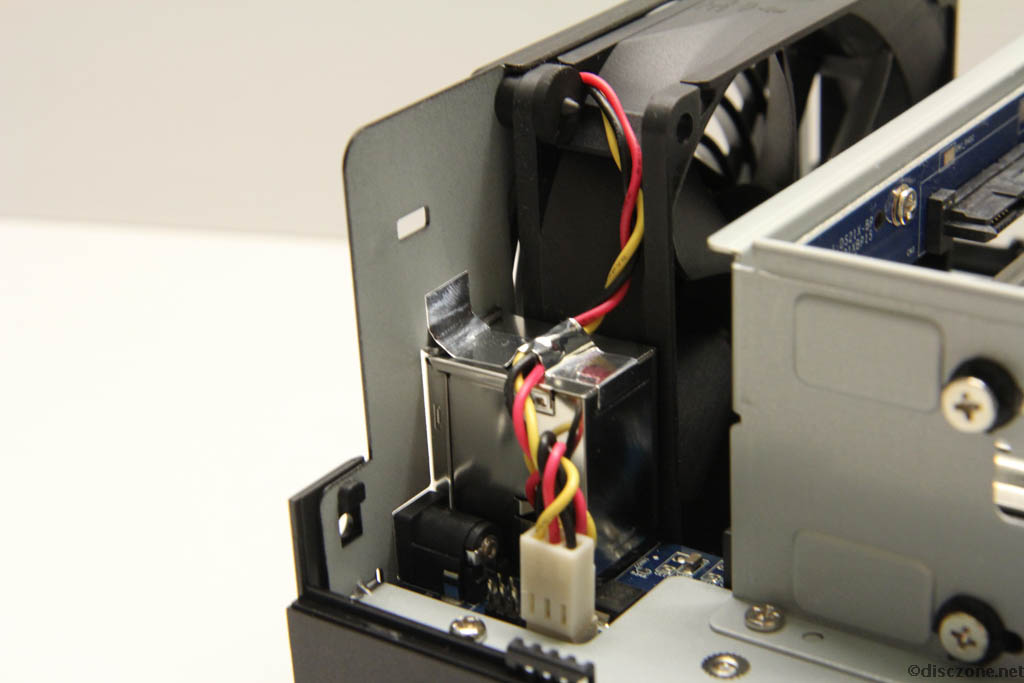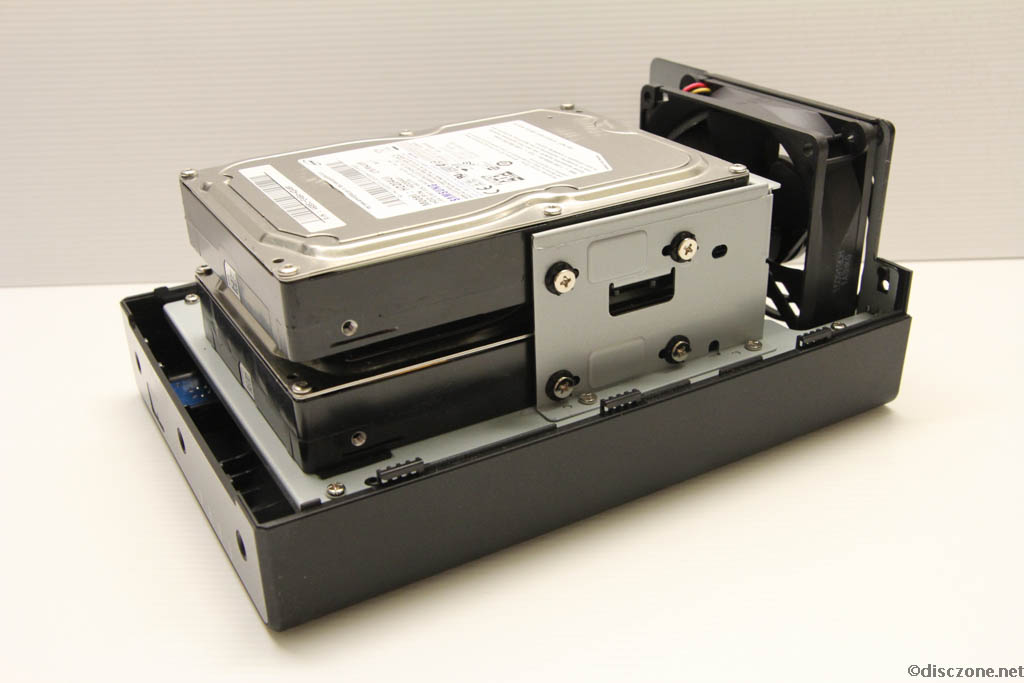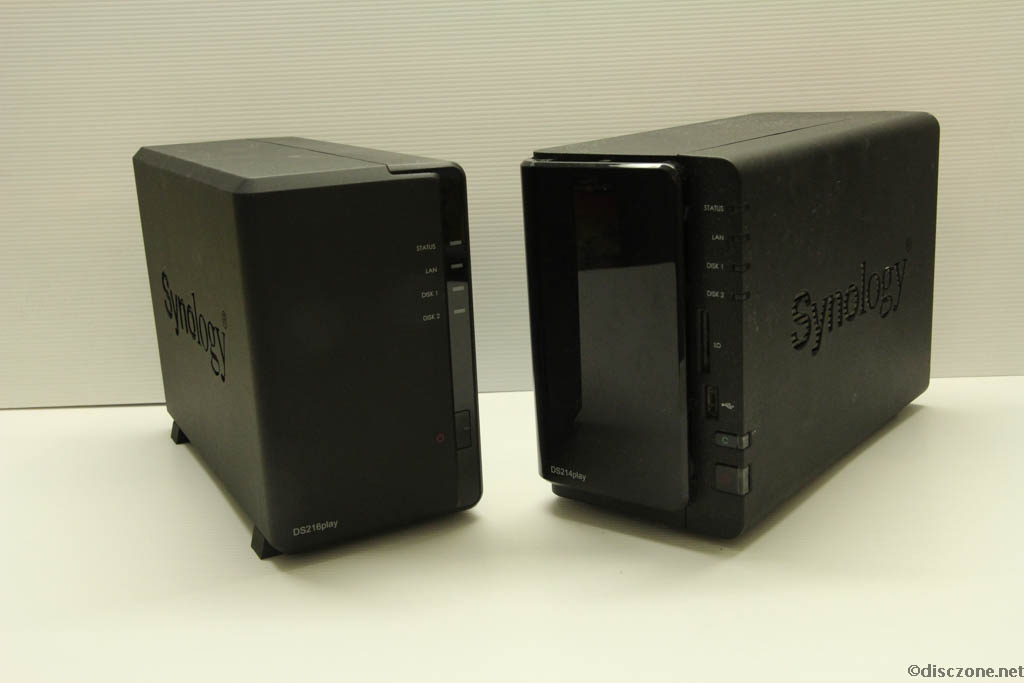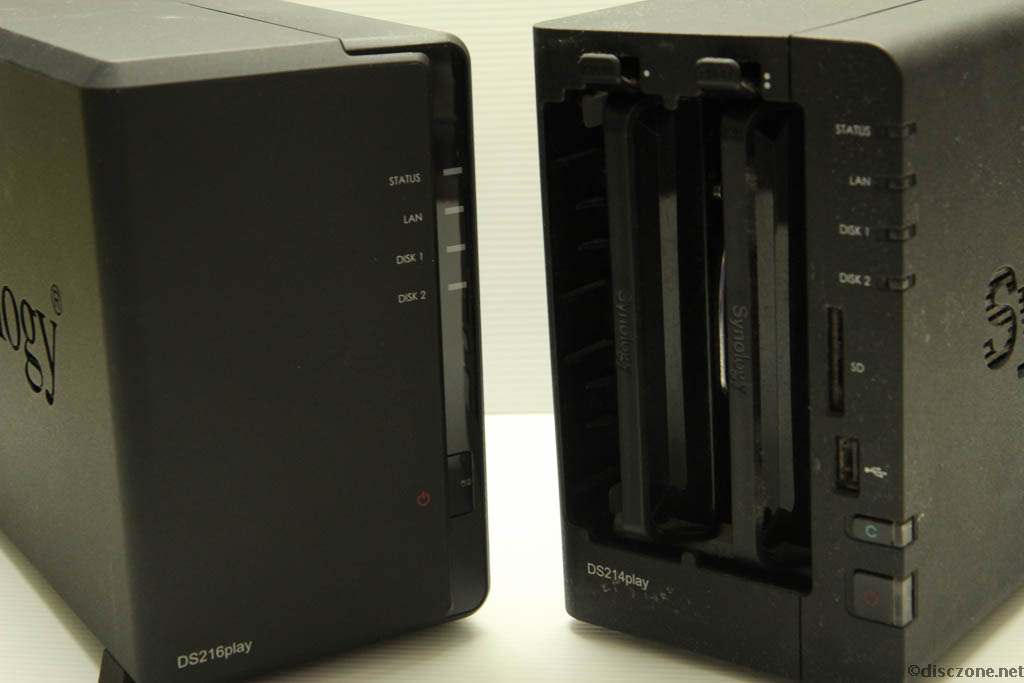This is a review of newly released Synology DiskStation DS216Play from Synology Inc. It has been a while since I last bought or reviewed a NAS. Besides the DiskStation DS1511+, DS412+, my other NAS is a 2-bay DS213 which is used as a off-site backup NAS for my critical files. The DiskStation DS216Play is a 2-bay Network Attached Storage (NAS) featuring 4K video transcoding and powerful processing capabilities, allowing high definition media contents while performing everything that a fully-fledged NAS is expected to do.
For this review, I’ll be covering the unboxing and also the hardware aspects of the Synology DiskStation DS216Play. The software setup of the NAS will be covered in the subsequent installations of this review.
The Synology DiskStation DS216Play comes in a eco-friendly looking brown carton box instead of the white or blue colored boxes that my DS213 and DS412+ came in.
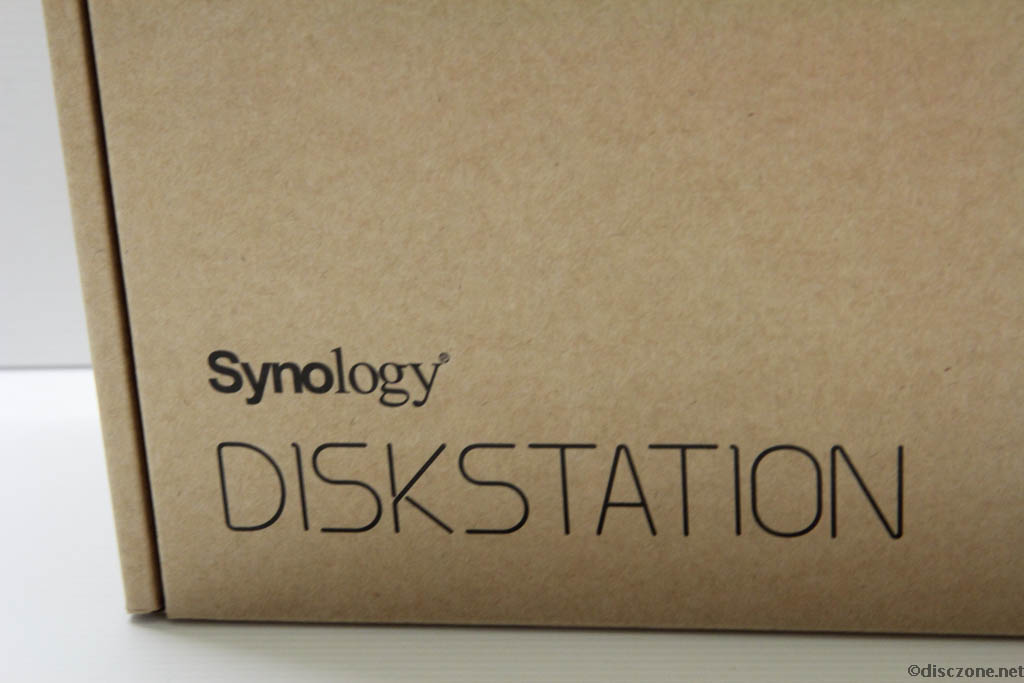
On the outside of the packaging carton, there are stickers showing key features of the Synology DiskStation DS216Play. The new DS216Play comes with a STM STiH412 32-bit Dual Core 1.5 GHz CPU with 1 GB DDR3 RAM. The NAS also has a hardware transcoding engine capable of supporting formats of H.265 (HEVC), MPEG-4 Part 2, MPEG-2, VC-1, with a maximum resolution of 4K or 3840 x 2160 at a maximum FPS of 30. The 2-bay of the Synology DiskStation DS216Play is able to support 2.5 inch (with optional adapters) and 3.5 inch HDDs and SSDs up to a maximum capacity of 8TB in each bay, making it a total of 16TB raw capacity.
The Synology DiskStation DS216Play also comes with a single 1GbE RJ-45 port for networking. For expansion, it comes with a USB2.0 port and a USB3.0 port for connecting USB devices such as USB thumb drive, HDDs and even WiFi dongles. In case you have not noticed it, the Synology DiskStation DS216Play also comes with a whopping 2 years warranty showing the confidence Synology Inc. has in this product.
Opening up the carton, the inside also very practical and simple. The DiskStation DS216Play itself is wrapped in a foam packaging with all the accessories housed in another smaller carton box above it.
The external body design of the Synology DiskStation DS216Play looks pretty similar to the older models of the DS 2-bay series of the DiskStation. For the avid supporter of Synology NAS, one may noticed where the difference may be. I’ve cover some of them later on in this review by comparing them with the predecessor, the Synology DiskStation DS214Play, which happens to be on loan from a friend during this review period.
The side of the Synology DiskStation DS216Play still have the wording “Synology” which also serves as the air vents for cooling purposes. If you are observant, you will also notice that the new DS216Play now comes with larger rubber/plastic legs too.
In the accessories box, you will find a simple 2 page Quick Installation Guide, GbE LAN cable, the power adapter (or brick), the power cord and screws for mounting the HDDs and also for securing the cover of the Synology DiskStation DS216Play.
Going on to the details, the new Synology DiskStation DS216Play now has a more sleek design with surface flushed LED lights showing the status of the NAS, LAN and the 2 HDDs.
At the rear, there are 2 holes (one near to the top and another near the bottom of the NAS) which screws have been provided to secure the cover of the NAS properly.
Below the usual rear fan of the NAS are the power, GbE, USB2.0 and USB3.0 ports. There is also provisioning for a Kensington lock and also a reset pinhole should you need to conduct a default password reset or even an entire factory reset of the NAS.
At the bottom of the Synology DiskStation DS216Play, you will notice that there are some new information on the sticker. There are 2 arrows pointing to the front and back of the set with the wordings “OPEN” and “CLOSE”.
The new Synology DiskStation DS216Play does not come with slot-in bays mechanisms as per previous versions of Synology NAS. Instead, you will need to slide open the left side of the NAS to expose a frame for mounting the HDDs. The sign in the picture above is actually there to show the user the direction to slide open the cover of the NAS.
A zoom-in view will show that the cover is actually held by plastic clips as shown below. Although the feel of the cover is quite sturdy now, I would still advise users to exert firm yet gentle force when trying to slide open or close the cover to avoid the clips from breaking.
Opening up the Synology DiskStation DS216Play, we can see a very simple and neat construction of circuity at the internal setup. The SATA ports are all sitting neatly at the back waiting for the HDDs to be slotted in.
There are also plastic/rubber lining at the supporting frame and points where HDD screws are mounted to provide better cushioning and for vibration damping purposes.
The big fan at the rear of the Synology DiskStation DS216Play fits exactly to the rear metal plate of the NAS with its power cables connected to the circuit board as shown. The red-black-yellow cable of the fan is held neatly in place via a insulating tape on the casing of USB/GbE ports. I’m not sure if this is an after-design provisioning but I hope this insulating tape may be changed to some retaining clips in future as the tape would not be lasting.
Another view of how the interior looks like after the HDDs are mounted.
Build wise, the frame is solid enough to hold the HDDs yet maintaining a nice clearance for ventilation. However, without the bay chassis like previous version of DiskStations, this new way of mounting the HDDs will mean that there would not be any hot-swapping of HDDs in the event of HDD failure. On the other hand, such feature may also not be useful to entry level users of the 2-bay series of DiskStations and the change in design will help to lower the manufacturing costs so that the savings can be passed on to the consumers.
To end of this portion of the review, let’s take a look Synology DiskStation DS216Play compared with its predecessor, the Synology DiskStation DS214Play. From the front view, the signature front cover of the hot-sway bay mechanism is now replaced by a full sliding cover.
The SD card slot and front USB2.0 port are also removed in the new Synology DiskStation DS216Play.
At the rear, the eSATA port is also no longer there.
Overall, the new Synology DiskStation DS216Play seems to be have some missing features from the previous version of the DS214Play. However, there are also some new improvements such as lighter yet sturdy chassis and 4K capable transcoding engine to focus the product at where it is supposed to be doing its best in. At a nice and affordable pricing of about S$360 (without any HDDs) in Singapore, I’m pretty sure it will be the most popular entry level 2-bay NAS to look out for in the few IT Shows to come.
I’ll cover the software and performance of the Synology DiskStation DS216Play in the second part of this review.

